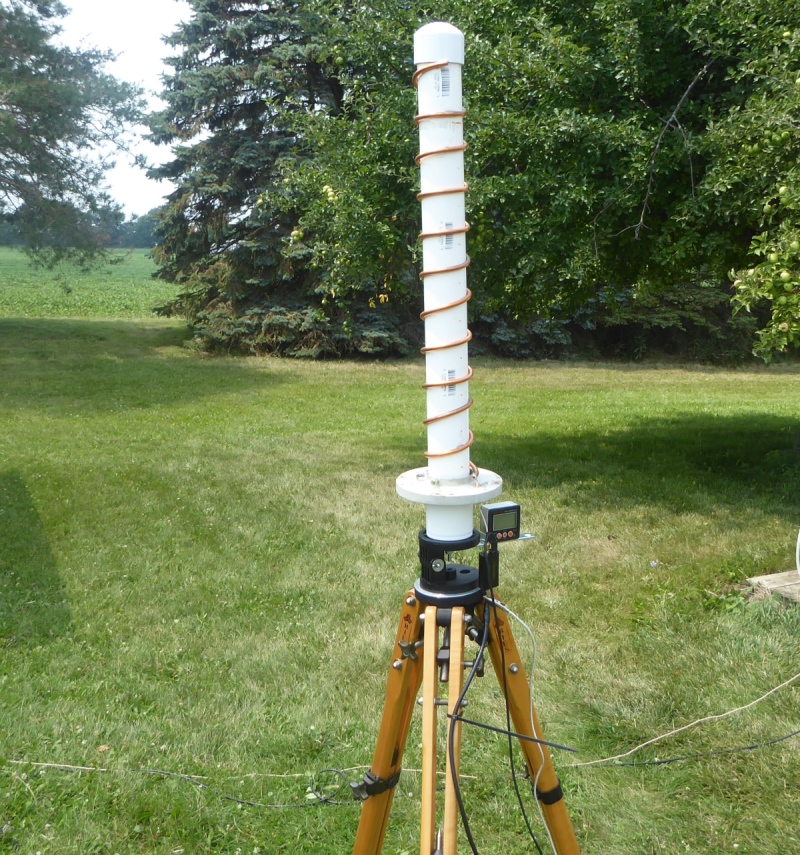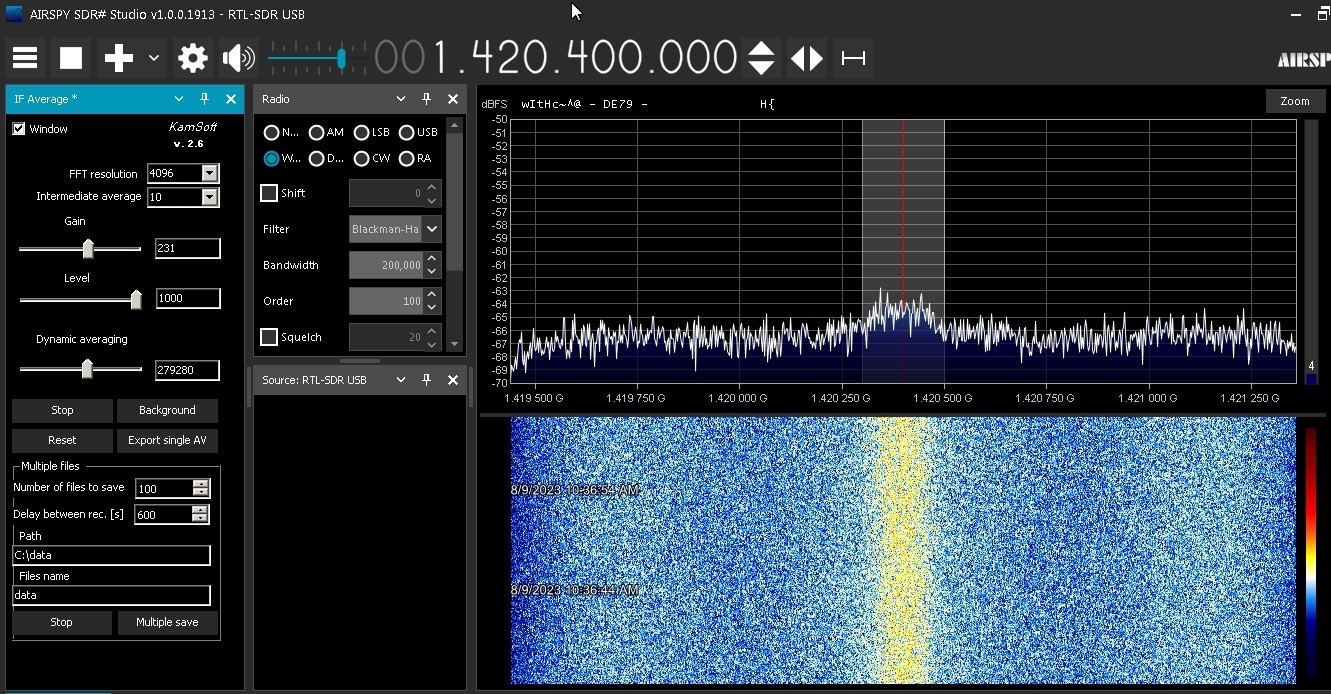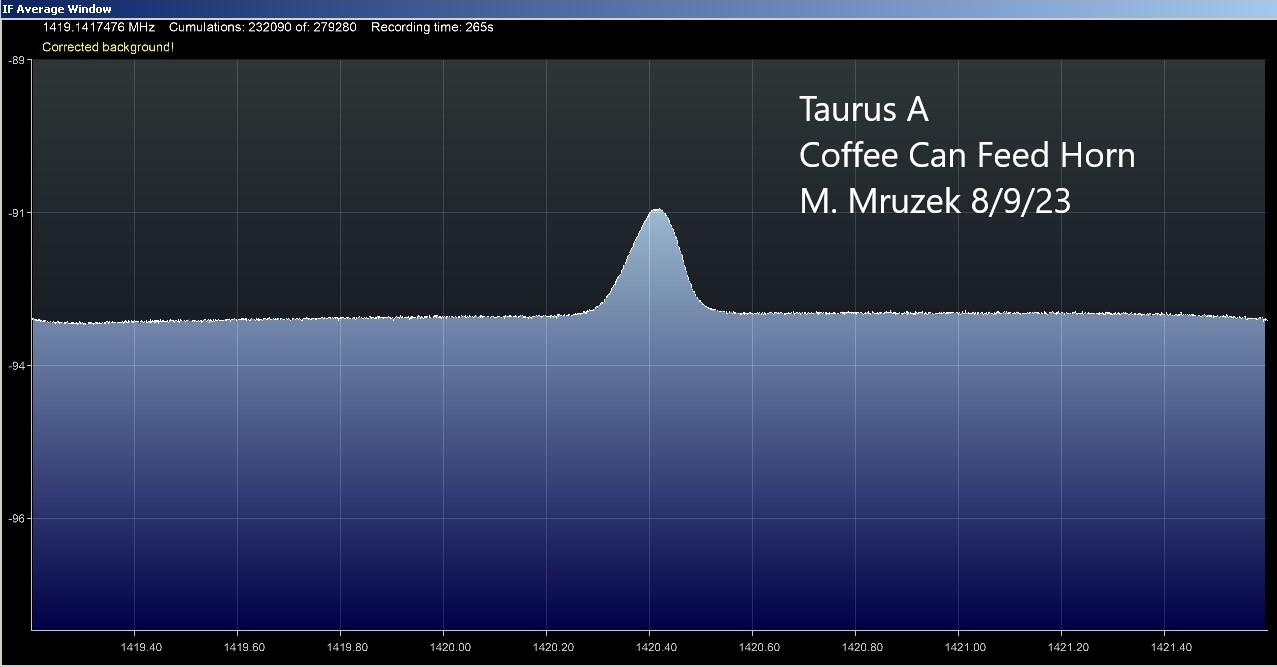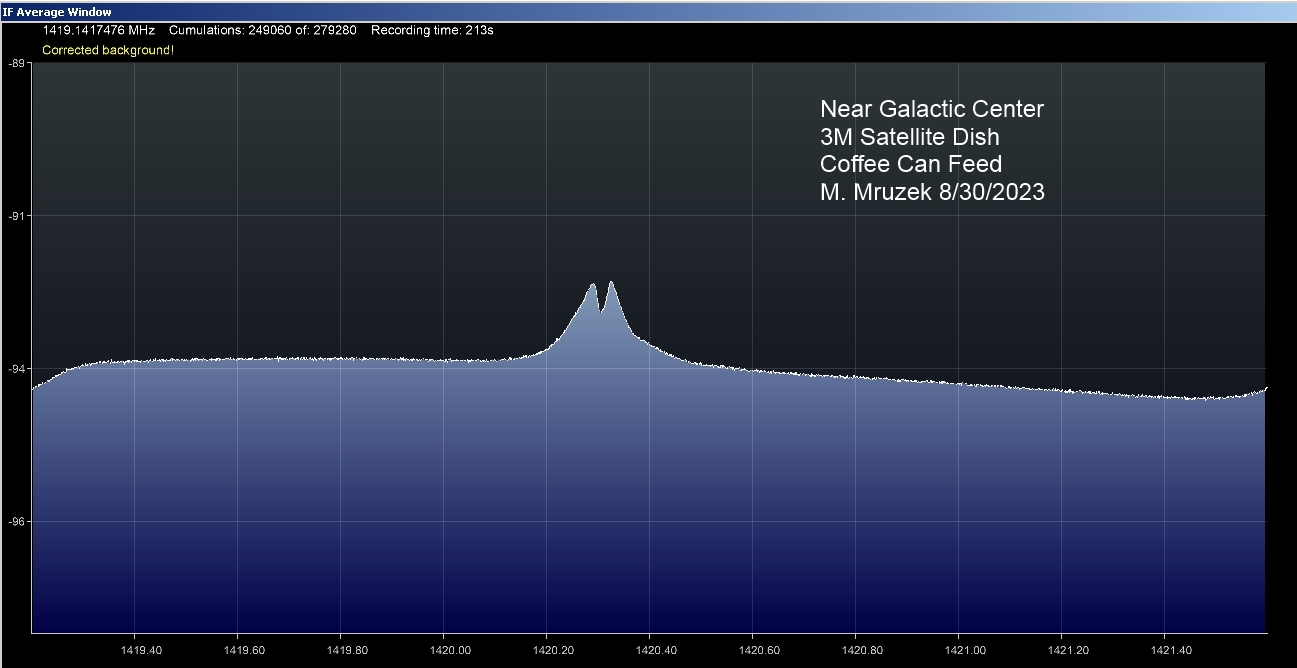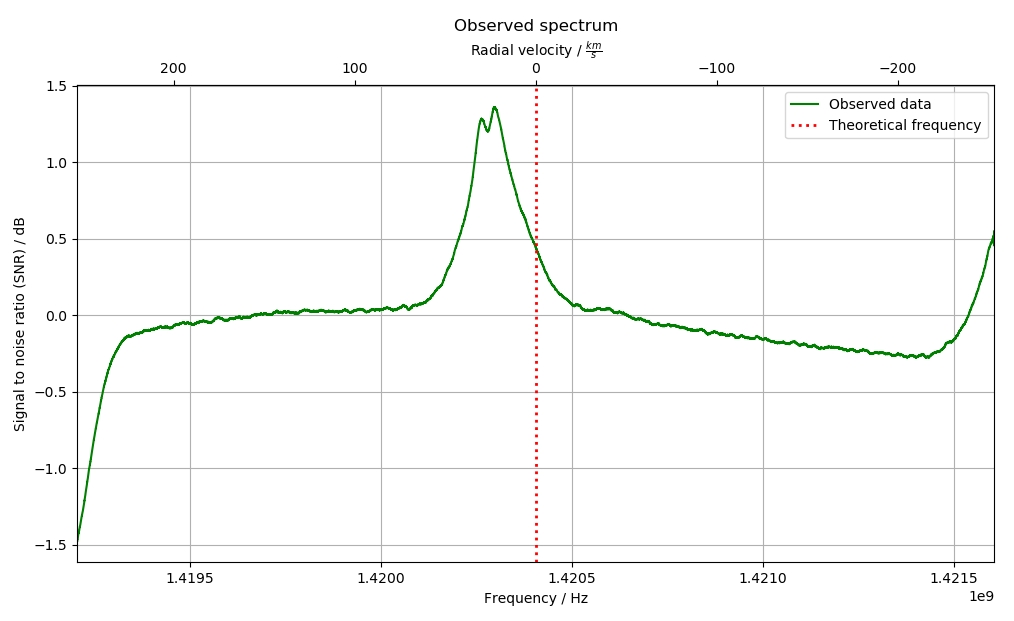Figure 2: Radio Telescope Equipment Setup
The helical antenna for 1420
MHZ was designed using a helical antenna calculator. (See link
below) Multiple experiments in the configuration of the helical
antenna were made: including number of turns, reflector shape and
impedance matching. We found a 10 Turn Helical wound with 1/4"
diameter soft copper tubing on a nominal 2" schedule 40 PVC pipe worked
very well. The final version of the reflector is a 6" diameter aluminum
disk. The simplicity of the helical antenna combined with low
fabrication costs and compact size make it an ideal first antenna for
hydrogen line work. The primary reason for our transition to a
parabolic TVRO satellite dish was because we already had the 3
meter dish in our backyard antenna farm.
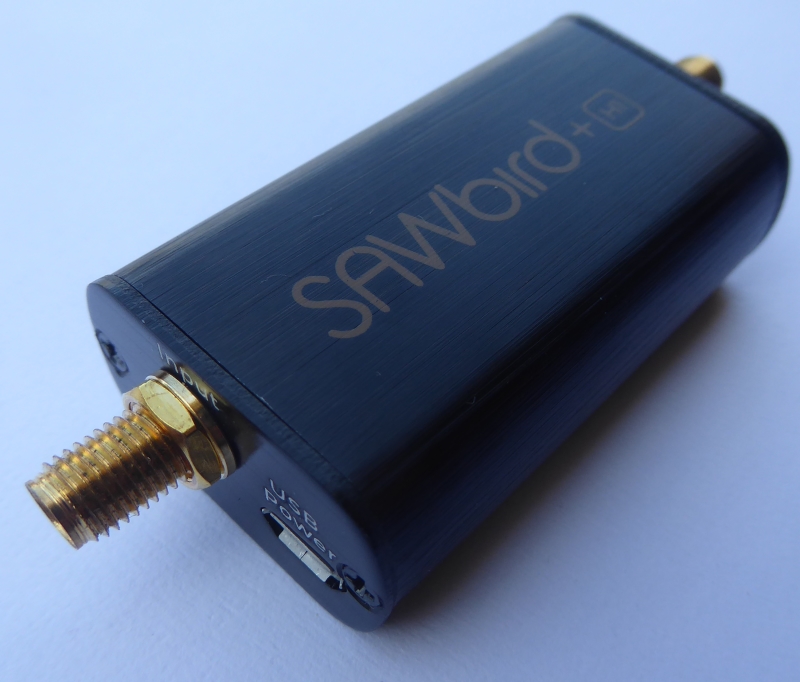
Figure 3:
SAWbird+ H1 Low Noise Amplifier for Hydrogen Line at 1420 MHZ
The most important amplifer in
a radio astronomy telescope is the low noise amplifier (LNA) located at
the mast of the receiving antenna. It is the LNA that most often
establishes the noise figure of the amplifier chain. We experimented
with several different LNA designs, including homebuilt and
commercial. We found the SAWbird+ H1 amplifier to work very well,
and it is a relative bargain from Amazon at about $45. We mounted
the LNA in a PVC enclosure at the dish feed horn. The cable run from
the LNA to our observatory consisted of about 25 feet of coaxial cable.
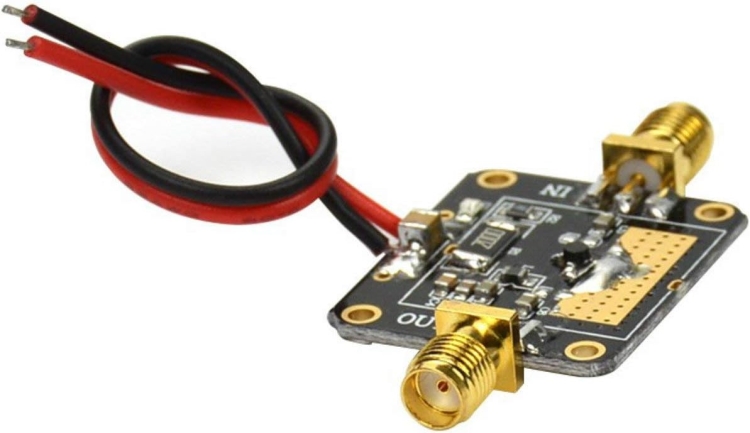
Figure
4: HUAZHU Broadband RF Line Amplifier Module
The
coaxial cable run to the observatory terminated in a broadband RF Line
Amplifier Module. The HUAZHU module is advertised to provide 32
dB of gain. We mounted the line amplifer inside a die cast aluminum
enclosure to minimize extraneous RF noise. These amplifers
are available on Amazon for about $15.

Figure 5:
K&L Tunable Bandpass Filter
The output from the line
amplifier is routed to a tunable bandpass filter set for 1420 MHZ. We
are using the bandpass filter in our amplifier chain primarily because
we have it available in our observatory. We eventually plan to
test removal of the filter to gauge impact (after we complete our
sky mapping project). We suspect it is not critical to performance, an
important consideration since the list price of a new bandpass filter
of this type is over $3000.
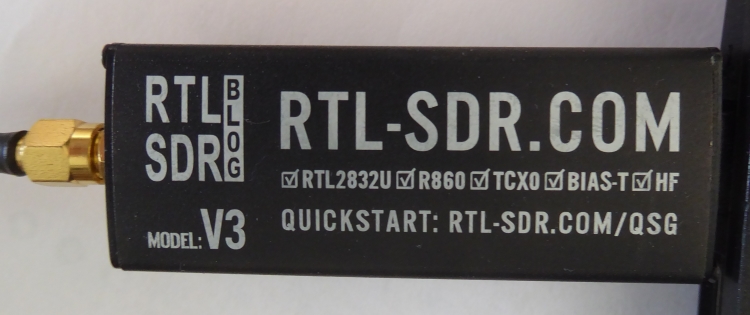
Figure 6:
RTL-SDR Software Defined Radio
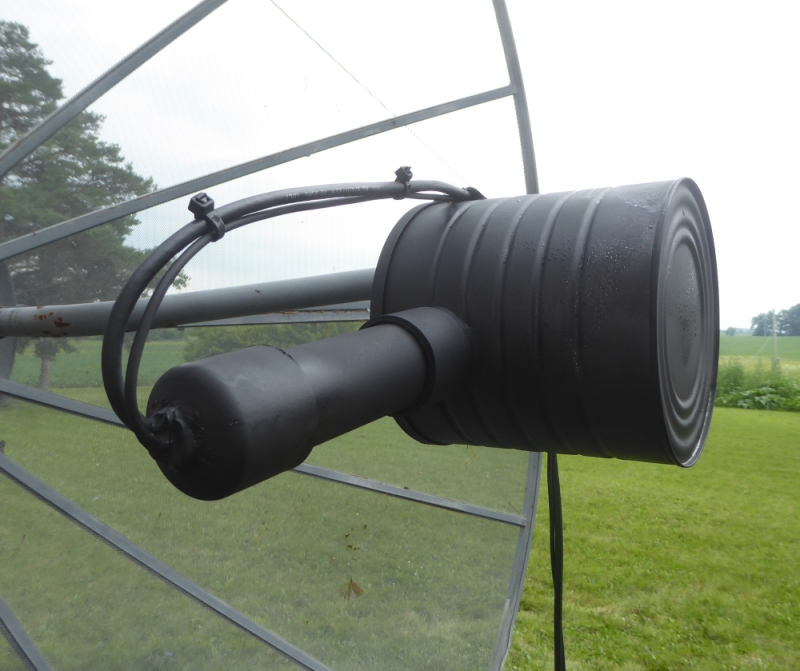 Figure 7: Feed horn and LNA
on the 3 meter satellite dish
Figure 7: Feed horn and LNA
on the 3 meter satellite dish
Transitioning from a helical
antenna to the dish antenna created a need for a feed horn. Fortunately
the hydrogen line frequency is relatively close to the same frequencies
radio amateurs use for EME communication (Earth-Moon-Earth). We found a
useful construction article for building a feed horn from a 3# coffee
can. At first this sounds almost ridiculous, but the approach actually
works surprisingly well. (See the article link below.)
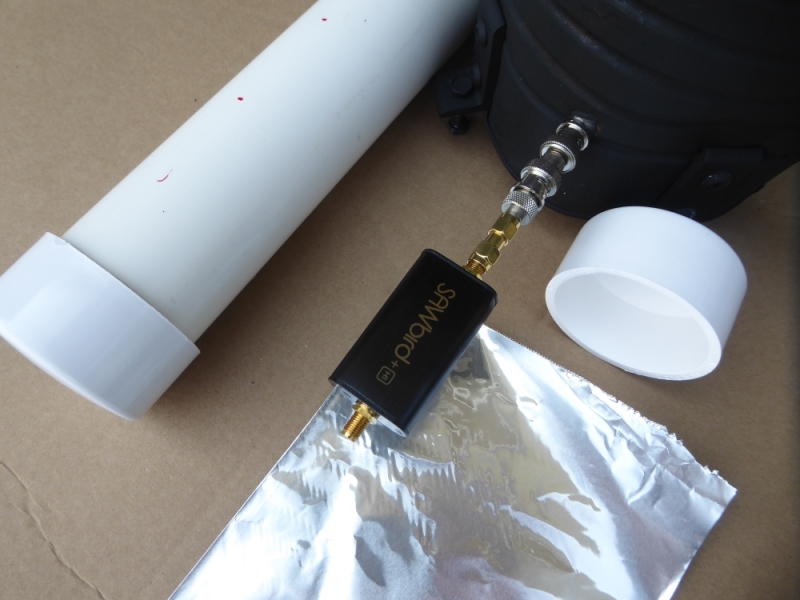
Figure
8: LNA at feed horn in PVC enclosure with aluminum foil shielding
The main challenge with
mounting the LNA at the feed horn of the dish was creating a
weatherproof enclosure. We opted to place the LNA inside a PVC pipe
enclosure attached with silicone sealant to the side of the coffee can.
The LNA was wrapped in aluminum foil to minimize RF interference.
The +5VDC power was provided to the LNA by a micro-usb connector and
cable. Note: The output signal of the LNA has a +5V DC component, which
was OK in our setup because the line amplifier has I/O blocking
capacitors.
